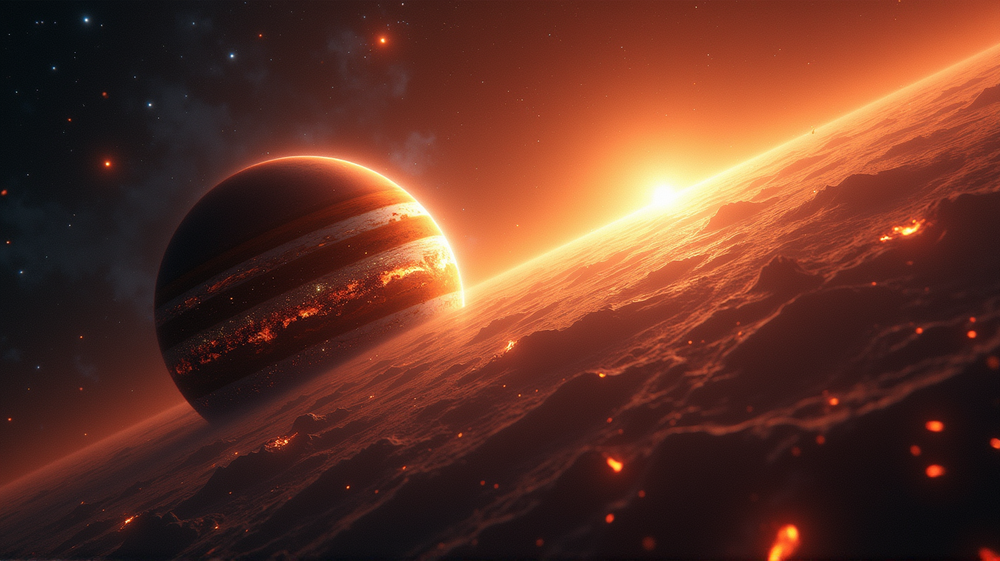The Genesis of the Gas Giant: Evidence from Ancient Meteorites
Billions of years back, the nascent solar system was a hub of cataclysmic events marking Jupiter’s turbulent birth. Recently, scientists at Nagoya University and the Italian National Institute for Astrophysics have made groundbreaking advances in understanding this formative period. They discovered that Jupiter’s growth sent cosmic rubble hurtling through space, resulting in explosive collisions that birthed molten rock droplets, known as chondrules.
Cosmic Cluesfrom Meteorites
These ancient chondrules are more than mere celestial debris; they’re keys to unraveling the past. Researchers have used them to narrow down the timeline for Jupiter’s birth to just 1.8 million years post the solar system’s inception, according to ScienceDaily. This discovery redefines how scientists perceive planetary formation.
The Formation of Time Capsules
The chondrules, though only millimeters wide, hold the secrets of cosmic timescales and processes. The researchers’ simulations revealed that the vaporized water, serving as tiny detonations, played a pivotal role in chondrule formation. This was a natural outcome in the early solar system’s chaotic environment, challenging prior formation theories and providing fresh insights into our cosmic origins.
Rewiring the Planetary Chronology
Not only does this discovery provide a timestamp for Jupiter, but it also assists astronomers in identifying formation orders of other celestial bodies. The understanding that massive planets like Saturn could also trigger chondrule creation during their birth enables scientists to map the developmental history of our solar neighborhood accurately.
Seeds of Knowledge for Stellar Neighbors
The repercussions of this study extend beyond our solar system. The research suggests that similar explosive planetary formation processes might be taking place around distant stars, offering crucial insights into other planetary systems’ evolution.
As reflected in the publication Scientific Reports, this monumental finding, supported by multiple research grants, highlights the intricacy of early solar phenomena and opens the door to reinterpret the planetary formation process on a universal scale.
Chondrules serve as eternal narrators of the tumultuous dance of forming planets, providing a clearer picture of the cosmic ballet we, and potentially others in countless galaxies, inhabit.












